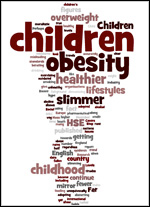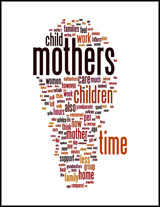Nothing to fear but fear itself
What is the most worrying story in this week's newspapers: The GM food scare? The mobile phones scare? Revived fears about beef on the bone? The HEA's new 'shock' campaign on sunbathing and skin cancer? No. To those genuinely concerned about the nation's current and future well-being, today's most alarming story is a brief report in the Evening Standard headlined "Children want mayor to target street crime".
An NOP survey asked about 200 London children aged between seven and 16: "If you were mayor, what would you change to make your area a better place for children and young people to live?" The majority responded that they would make the streets "less dangerous". A spokesman for the Children's Society, which commissioned the survey, said the results showed that "safety and security on the streets is an obvious priority" for the capital's children.
The children's response is worrying, not because it reveals any increase in the actual dangers faced by young people, but because it indicates that children are increasingly affected by the culture of fear, risk-aversion and worship of safety which have become the defining characteristics of contemporary society.
The current climate of pervasive anxiety is associated with lowered expectations, a trend clearly reflected in the children's responses. They do not ask for more interest, excitement and fun in their lives, but merely, depressingly, for protection from vague and unspecified dangers. When asked what would make their area better for children and young people, they do not think of circuses, fairgrounds, discos or pop-festivals, but of traffic control and stranger-danger. Even those who did mention 'activities' rather than risks asked only for more "affordable" youth clubs and "cleaner" parks, not for Spice Girl concerts or thrilling theme-park rides.
We are raising, it seems, a generation of anxious, timid young people, with low expectations, stunted aspirations, little sense of enjoyment and no spirit of adventure. Yet neither the reporter covering this story nor the children's charity responsible for the survey express any concern about this trend. The Children's Society spokesman even seems to approve of the respondents' unhealthy fears and anxieties, recommending that candidates for the position of mayor of London should take note of the priority given to safety issues. SIRC would recommend, instead, that candidates focus on tackling the culture of fear which is damaging the mental health of young Londoners.
It is possible, of course, that the children surveyed were not given the chance to make more imaginative or adventurous suggestions – that the tick-boxes on the NOP questionnaire only offered options relating to safer streets, supervised youth clubs and cleaner parks. It may be that the fears and low expectations apparently expressed by the children were in fact imposed on them by the adults who designed the survey.
Either way, children are being taught to believe that the world they live in is a scary, hazardous place. Rather than giving them the skills and confidence to cope with crossing busy roads – even the Children's Society spokesman admits that their fears of strangers are largely unfounded, which leaves traffic as the only significant problem – we are teaching them to feel frightened and helpless and in need of protection. Then, when they grow up, they will know how to be scared of food, mobile phones and sunshine.





